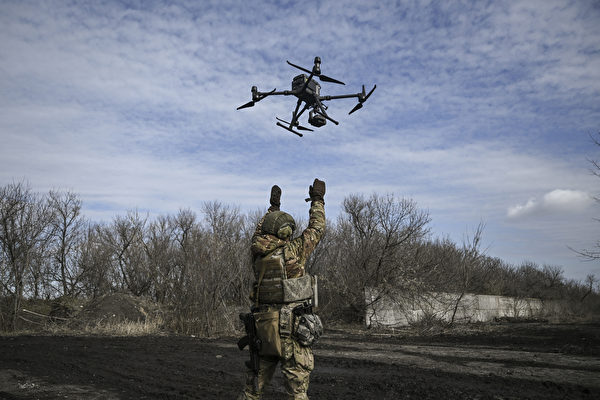The Pentagon is drawing crucial lessons from the battlefield in Ukraine, as the US Army is forming a new unit closely monitoring the developments in Ukraine, testing new drones and electronic warfare tactics to prepare for potential future conflicts with Russia and China.
In the eastern battlefields of Ukraine, the utilization of drones and electronic warfare units has completely transformed the way battles are fought, prompting close attention from the Pentagon. The Multi-Functional Reconnaissance Company (MFRC) of the Army’s 101st Airborne Division, established in March this year, has been tasked by US military leadership to implement lessons learned from Ukraine.
Reporters from Defense One visited the unit located in Johnsonburg, Louisiana. The unit is experimenting with new drones, anti-drone technology, electronic warfare, and other equipment that could assist in the modernization of the US military, as well as developing new military doctrines.
The MFRC possesses the latest technologies, including commercial drones, anti-drone technology, electronic warfare tools, command and control software, deception equipment, highly mobile vehicles, and more.
“We can learn a lot from the Ukrainians, much of which relates to the integration of new capabilities, like the proliferation of drones,” said Major General Brett Sylvia, commander of the 101st Airborne Division, in a media briefing.
Drones priced as low as a few hundred dollars have been used by the Ukrainian military for surveillance of enemy positions, carrying explosives for attacks on enemy forces and armored vehicles, and even for taking down Russian helicopters. This means that large troop concentrations have become very risky as they are easily detected and targeted.
In response, Russia has also developed its own battlefield drone capabilities and strengthened its electronic warfare units to intercept and disrupt Ukrainian drones. This has led to a cat-and-mouse game, with both sides adapting and modifying their drones to evade enemy defences.
In February, The Washington Post reported that the Pentagon is revising its previous military scripts aimed at terrorist organizations to refocus on the possibility of conflict with Russia, China, and others.
According to reports, a group of defense officials are closely studying the conflict in Ukraine, including areas such as ground mobility, air power, and long-range firepower, to incorporate lessons learned into new defense strategies.
The report states that part of this effort is to figure out how US infantry can integrate small drones into their units to counter enemy drones, as well as enhance the capability to monitor and target enemy positions with electronic signal surveillance.
As reported by Defense One, the Multi-Functional Reconnaissance Company is experimenting with various technologies, such as new drones capable of rapidly collecting data, handheld electronic warfare equipment, and technology that can simulate electronic signals for redirecting enemy fire.
Currently, the MFRC is composed of three reconnaissance platoons called “Hunter” platoons, a drone and electronic warfare platoon, and a robotics and autonomous systems platoon, tasked with operating ground robots and drones.
Each Hunter platoon is equipped with up to six short-range commercial drones, including models like Skydio, Parrot, and Vesper. If a Hunter platoon uses a Parrot drone to spot a target, it can employ artificial intelligence software named Sentinel AI to recommend the optimal angle to launch ammunition to take it down. Captain Charlie O’Hagan, the MFRC commander, stated that the new technology has reduced the time needed to destroy a target from up to eight minutes to less than a minute.

